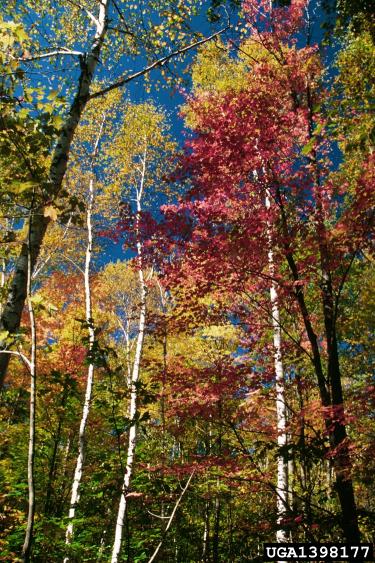Fire Regime 5
In the cool, wet climates of coastal and subalpine forests, fire can only take hold during periods of sustained drought. As a result, fire occurs rarely, only every few centuries. When it does, the forest is consumed and starts anew. Typical woodlands in this fire regime include the coastal rainforests of the Pacific Northwest, the subalpine forests of the Cascades and Sierra Nevada, the Engelmann spruce-subalpine fir forests of the Rockies, and the northern hardwood and conifer forests of the Lake States and northern New England. All species within this fire regime are thin-barked, betraying their lack of adaptation to fire.
Forest regeneration in Fire Regime 5 follows a predictable path after fire. It begins with a post-fire meadow or brushfield, followed by an even-aged, young forest, as in Fire Regime 4. Unlike Fire Regime 4, though, the forest canopy eventually breaks up, as competition, insects, or disease create openings large enough to be colonized by another generation of trees. At this point, the forest begins to take on an “old growth” structure, with downed logs and trees of all sizes found in a multi-layer, complex arrangement. In more fire-prone climates, this kind of structure would be vulnerable to crown fire, but in the cool and/or wet conditions of Fire Regime 5, it may exist for centuries before a significant enough drought ignites and starts the process over.
How can I get more tips?
It’s simple! Enter your email below.

